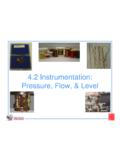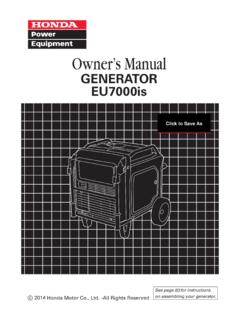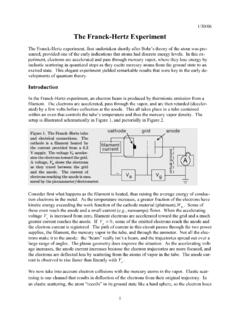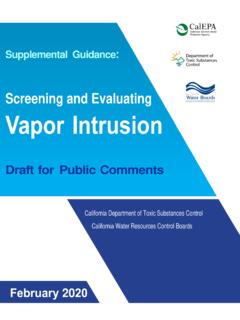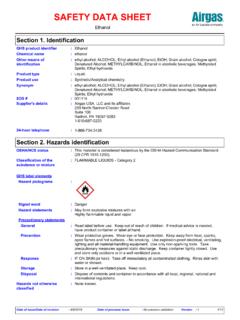Transcription of GREENHOUSE LIGHTING
1 1 GREENHOUSE LIGHTING Neil Mattson, Associate Professor and Floriculture Extension Specialist Cornell University, 134A Plant Science Building, Ithaca, NY 14853 email: phone: (607) 255-0621 3 ways to think about light Light quantity also referred to as light intensity, is the total amount of light supplied to the plant, which is then used for photosynthesis; up to a point the higher light quantity the more energy a plant can sequester in photosynthesis Light quality refers to the wavelengths of light supplied ( color of light), for example red light has wavelengths between about 630-700 nanometers, far red light is 705-740 nm, blue light is at 400-450 nm, and ultraviolet A is 315-400 nm.
2 Plants can respond to different colors of light by changing their growth form (phytomorphology) a high fraction of far-red light (from incandescent lamps or as shaded by other plants) causes plants to stretch excessively. High fraction of blue light (such as from fluorescent or metal halide lights) can cause shorter plants Light photoperiod is the day length or number of hours a day plants receive light. For example, when sunrise is at 6am and sets at 8:00pm there is a 14 hour photoperiod (actually a bit longer as plants perceive light at twilight). Photoperiod controls flowering in many plants. Scientists found it is actually the duration of darkness that is important.
3 O Long day plants (petunia, fuchsia, pansy) flower when the day length is longer (actually night length is shorter) than a critical photoperiod. o Short day plants (chrysanthemum, poinsettia, African marigold) flower when the day length is shorter (actually night length is longer) than a critical photoperiod o Day-neutral plants (garden impatiens, New Guinea impatiens, fibrous begonia) flower under all photoperiods, flowering is not regulated by photoperiod. How to measure LIGHT QUANTITY Humans and plants see light differently. Humans see green light most easily (peak at 550 nm) and it takes a relatively small amount of light for us to see well.
4 For photosynthesis, plants use light between 400-700 nm, and the more light the more photosynthesis (up to a point). Because of this, ways of measuring light for humans (example foot candles) are not appropriate for plants. Units for human vision (380-750 nm) (Don t use these units for referring to GREENHOUSE LIGHTING ): candela: total light output of a standard candle foot candles: intensity at a surface, includes area (lumens/ft2) lumens: output of a light source; lumens = 1 candela lux: intensity at a surface, includes area, lumens/m2 ( lux/ft-candle) 2 Measure of light for plants (400 to 700 nm): Photosynthetically Active Radiation (PAR), this is measured in the range of 400-700 nm o The unit for measuring instantaneous light incident upon a surface is micromoles per square meter per second (or mol/m2/s) - this is the amount of energy (photons or particles of light) hitting a square meter every second.
5 (The term mole is a really large number, photons, a micromole ( mol) is one-millionth of a mole). o Daily light integral (DLI) is the accumulation of all the PAR received during a day. The unit for cumulative light or daily light integral (DLI) is moles per square meter per day (or mol/m2/day) Light as perceived by humans Light as perceived by plants for photosynthesis To convert instantaneous light intensity to light integral, remember, that an hour has 3600 seconds and 1 million mol = 1 mol Calculation Example: You install a high pressure sodium lamp that supplies 100 mol/m2/s. How much light will it supply if kept on for 12 hours?
6 Multiply instantaneous light by 3,600 seconds/hour and multiply by the number of hours on. Then divide by 1 million (1,000,000) o 100 mol/m2/second x 3,600 seconds/hour x 12 hours = 4,320,000 mol/m2/day o 4,320,000 mol/m2/day divided 1,000,000 = mol/m2/day How much light does the sun provide? This varies greatly based on the season, and from day to day as cloud cover changes 3 On a sunny day in summer, at noon there will be about 2,000 mol/m2/second of instantaneous light; over the course of that sunny day about 65 mol/m2/day At noon on a cloudy winter day, there may be only 50 mol/m2/second of instantaneous light, over the course of that cloudy day about 1 mol/m2/day Below is outdoor daily light integral (DLI of PAR in mol/m2/day) for a 14-year period for Ithaca, NY (each dot is the reading for one day).
7 Note the large difference between the very darkest and brightest measurements, and the fact that some summer days can be just as dark as some of the darker winter days. Depending on the GREENHOUSE , 50-70% of this light will be transmitted into the GREENHOUSE . Benefits of optimum light Bedding and potted plants grown under optimum light will have a better plant form more compact, more branching, and more plant biomass. Most bedding plants will be marketable sooner under optimum light. If you propagate your own plants, adding LIGHTING to liners and plugs in mid-winter (when natural light is poor) will help them root and establish faster, allowing you more crop turns or to begin propagation later (saving GREENHOUSE heating costs).
8 LIGHTING during the propagation stage can be more economical because plants are being grown relatively densely, so a large number of plants can be treated in a small area. 4 How much light do plants need? This depends on each species, but some general rules of thumb (More detailed information is provided in the references below) Propagation of plugs and cuttings: 8-12 mol/m2/day (after callus) Bedding plants: 10-12 mol/m2/day or greater Vegetables o Hydroponic lettuce 15-17 mol/m2/day if vertical airflow fans are used (greater than this can cause leaf tip burn, a physiological disorder from calcium deficiency that occurs under high light) o Tomatoes 20-30+ mol/m2/day (for maximum yield) Comparing lamps for supplemental LIGHTING Several different types of lamps are available for supplemental LIGHTING .
9 Fluorescent lights are often used for germination shelves because they can be placed close to plants without overheating them. They are usually not used for supplemental LIGHTING in the GREENHOUSE as their fixture causes excessive shading). Lifespan to 80% light output is about 10,000 hours. High intensity discharge (HID) lamps are most often used for GREENHOUSE supplemental light because of their high light output and relatively little shading there are two main types: high pressure sodium (HPS) which look yellow/orange and metal halide (MH) which look bluish. Lifespan is about 20,000 hours for MH and 30,000 hours for HPS.
10 Light emitting diode (LED) lamps are becoming more affordable and higher output. For plants they are often red and blue to target spectra where photosynthesis is slightly more efficient. They produce heat but out of the back of the fixture (not with the light) therefore they can be placed close to the plant (similar to fluorescent). Lifespan is 25,000-50,000 but this is very temperature dependent (lower lifespan at warmer temperatures). Calculating the costs of supplemental LIGHTING Two factors are used to calculate LIGHTING costs the initial cost of the lamp (capital) cost and the operating (electrical) cost.







